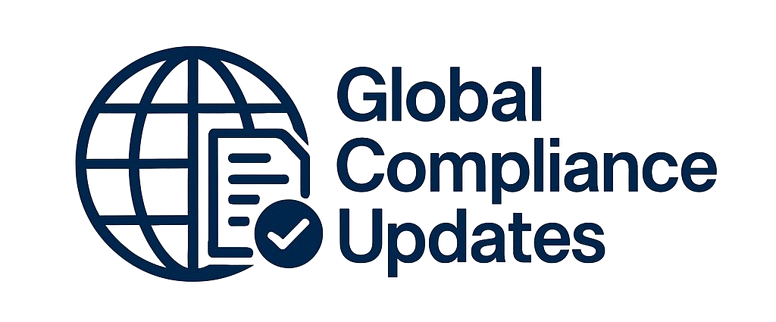Standard Operating Procedures (SOPs) are the basis for a large part of the day-to-day training that most pharmaceutical employees are required to perform. Still, it is not widely understood how the writing of a procedure can have a positive or negative impact on training or employee performance, and as a result, training often misses the mark or employees make mistakes that could have been avoided with better synchronization between the activities of the documentation and training groups.
WHY SHOULD YOU ATTEND?
This session is designed to assist learners with the following objectives:
- To improve the writing of SOPs for more effective training and reduction of errors
- To understand the regulatory implications of what is written in an SOP
- To learn the parameters of an effective SOP
- To distinguish a well-written SOP from a poorly written one
- To define processes better by effective interaction with the SOP process owner and/or author
- To integrate the SOP effectively into the position curricula of employees
- To explore the connection between SOPs and job performance, and measure retention of SOP content at the training stage
- To make better use of existing tools to evaluate the effectiveness of both SOPs and training
AREA COVERED
In this course, you will learn the vital connection between documentation and training, and how to maximize this connection to improve the quality of both SOPs and training, as well as job performance. This course is geared toward the pharmaceutical industry, particularly those areas which develop SOPs for the manufacturing or quality monitoring of pharmaceutical products, as well as Information Technology (IT).
The content will be especially beneficial for anyone who is an owner of a process, is responsible for writing or reviewing procedures, and/or manages training in a GMP environment. The course aims to provide practical information, which has already been used on the job effectively, and suggests similar actions that learners can apply to their job situations quickly.
LEARNING OBJECTIVES
- Regulatory requirements for SOPs
- Define the parameters of an effective SOP – How your foundation keeps subsequent steps from going awry
- Interact with the SOP process owner/author to improve the writing of procedures
- Translate the SOP into effective curriculum development and training execution
- Perform an ongoing assessment of the knowledge retention of learners for continuous improvement
- Review of learning objectives
WHO WILL BENEFIT?
- Documentation specialist
- Documentation manager
- Technical writer
- Trainer
- Training manager
- Quality Assurance specialist
- Quality Assurance manager
This session is designed to assist learners with the following objectives:
- To improve the writing of SOPs for more effective training and reduction of errors
- To understand the regulatory implications of what is written in an SOP
- To learn the parameters of an effective SOP
- To distinguish a well-written SOP from a poorly written one
- To define processes better by effective interaction with the SOP process owner and/or author
- To integrate the SOP effectively into the position curricula of employees
- To explore the connection between SOPs and job performance, and measure retention of SOP content at the training stage
- To make better use of existing tools to evaluate the effectiveness of both SOPs and training
In this course, you will learn the vital connection between documentation and training, and how to maximize this connection to improve the quality of both SOPs and training, as well as job performance. This course is geared toward the pharmaceutical industry, particularly those areas which develop SOPs for the manufacturing or quality monitoring of pharmaceutical products, as well as Information Technology (IT).
The content will be especially beneficial for anyone who is an owner of a process, is responsible for writing or reviewing procedures, and/or manages training in a GMP environment. The course aims to provide practical information, which has already been used on the job effectively, and suggests similar actions that learners can apply to their job situations quickly.
- Regulatory requirements for SOPs
- Define the parameters of an effective SOP – How your foundation keeps subsequent steps from going awry
- Interact with the SOP process owner/author to improve the writing of procedures
- Translate the SOP into effective curriculum development and training execution
- Perform an ongoing assessment of the knowledge retention of learners for continuous improvement
- Review of learning objectives
- Documentation specialist
- Documentation manager
- Technical writer
- Trainer
- Training manager
- Quality Assurance specialist
- Quality Assurance manager
Speaker Profile
 Michael Esposito
Michael Esposito
Michael Esposito has over 30 years’ experience in the pharmaceutical industry and 17 years’ experience in GMP training and document management. He has worked for Wyeth Pharmaceuticals, Pfizer, and Johnson & Johnson's Consumer Healthcare Division in a variety of areas including Packaging, project administration, Quality Assurance, Government Contracts, translations, systems training, and international operations. He collaborated in the development and implementation of the training portion of the Consent Decree workplan for Johnson & Johnson Consumer Healthcare and revised their introductory GMP course. He is a member of the training organizations GMP Training Educators Association and Association for GXP Excellence and …
Upcoming Webinars

ChatGPT and Project Management: Leveraging AI for Project M…

Workplace Investigations 101: How to Conduct your Investiga…

Project Management for administrative professionals

The Monte Carlo Simulations in Excel for Risky Investments

Onboarding is NOT Orientation - How to Improve the New Empl…

Dealing With Difficult People: At Work & In Life

Transform Data into Insights: A Beginners Guide to Excel Pi…

Construction Lending And Real Credit Administration: Evalua…

Understanding Accounting for non - Accounting professionals

Harassment, Bullying, Gossip, Confrontational and Disruptiv…

New Form 1099 Reporting Requirements: 2025 Compliance Update

Human Error Reduction Techniques for Floor Supervisors

HR Metrics and Analytics 2025 - Update on Strategic Plannin…

Treating Employees Like Adults: Discipline versus Empowerme…

7 Ways To Beat Burnout: Without Quitting Your Job


How to Write Procedures to Avoid Human Errors

Handbook Overhaul 2026: Compliance, OBBB Act & Beyond

FDA Proposes Framework to Advance Credibility of AI Models

Ethical Terminations: Navigating Employee Exits with Legal …

Understanding EBITDA – Definition, Formula & Calculation

Project Management for Non-Project Managers - Scheduling yo…

4-Hour Virtual Seminar on Hidden Secrets of Selling & Marke…

Validation Statistics for Non-Statisticians

Data Integrity and Privacy: Compliance with 21 CFR Part 11,…


The Alphabet Soup: When the FMLA, ADA, COBRA, and Workers' …

Talent Management: How to Leverage AI and ChatGPT Tools for…


Offboarding with Care: Conducting Legal & Ethical Employee …

2-Hour Virtual Seminar on How to Conduct an Internal Harass…

Payments Fraud Detect & Prevent Check, ACH and P-Card Schem…

Managing Toxic & Other Employees Who have Attitude Issues



Reduce Stress in the Workplace: Effective Ways to Handle Co…





Excel - Pivot Tables - The Key To Modern Data Analysis and …
